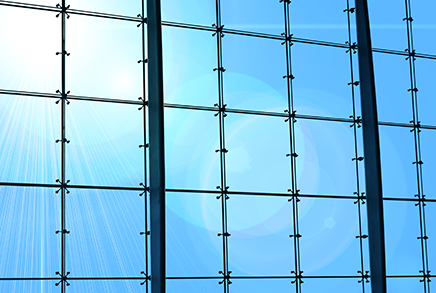Curtain Wall Systems vs Traditional Walls: A Comprehensive Comparison
Curtain wall systems are redefining the skylines of cities across India, offering a sleek, modern aesthetic with advanced functionality. At the same […]
Curtain wall systems are redefining the skylines of cities across India, offering a sleek, modern aesthetic with advanced functionality. At the same time, traditional walls remain a tried-and-tested construction method that many projects still rely on. But how do these two approaches compare? In this blog, we’ll explore curtain wall systems versus traditional walls, their benefits, challenges, and why curtain walls are becoming the preferred choice for modern commercial buildings.

What is a Curtain Wall System?
- Lightweight yet durable
- Allows maximum daylight penetration
- Enhances architectural aesthetics
- Improves thermal and acoustic performance
What are Traditional Walls?
- Strong structural support
- Fire resistance and durability
- Cost-effective for smaller or low-rise buildings
- Limited flexibility for large glass façades or modern designs
Key Benefits of Curtain Wall Systems over Traditional Walls
Aesthetic Appeal
- Curtain walls deliver a sleek, frameless look, perfect for high-rises and corporate buildings.
- Traditional walls, while solid, often appear bulky and limit creative architectural expression.
Natural Light & Energy Efficiency
- Curtain walls maximize daylight and can integrate insulated glass units (IGUs) for better thermal performance.
- Traditional walls limit window openings and increase dependency on artificial lighting.
Weight & Structural Efficiency
- Curtain walls are lightweight and place less load on the foundation.
- Traditional masonry walls are heavy, adding to structural costs in high-rise construction.
Flexibility in Design
- Curtain walls work with complex designs — curved façades, double-skin systems, and smart glass.
- Traditional walls are limited in adaptability and modern styling.
Innovations & Applications in Modern Construction
Curtain wall systems are evolving with new technologies:
- Double-skin façades improve insulation and reduce heat gain.
- Solar-control glass lowers glare and energy consumption.
- Smart glass adjusts transparency for comfort and efficiency.
- Corporate towers and commercial complexes
- Airports, malls, and hotels with striking exteriors
- Institutional projects where modern aesthetics matter
Challenges & Importance of Expertise
- Airtight sealing to prevent leakage
- Managing thermal expansion of materials
- Compliance with safety and fire codes
With expert partners like Oersted, these challenges are addressed through advanced design, premium materials, and professional installation.
Why Curtain Walls Matter in Modern Architecture
- Elevate building aesthetics with modern, sleek design
- Increase sustainability through energy-efficient glazing
- Ensure long-term durability with engineered systems
- Add value to commercial properties by boosting appeal
Conclusion
Get in touch today to explore how curtain wall systems can transform your next project.
FAQs on Curtain Wall Systems
Curtain walls are non-load-bearing systems attached to a building’s frame, while traditional walls are load-bearing and form part of the structure.
Yes, modern curtain walls use insulated and solar-control glass, improving energy efficiency and reducing HVAC loads.
Absolutely. With proper engineering and materials, curtain wall systems withstand wind loads, seismic movements, and weather conditions.
They may have higher upfront costs, but they offer long-term savings through reduced maintenance and energy consumption.
They are popular in office buildings, malls, airports, hotels, and institutional projects seeking a modern architectural statement.